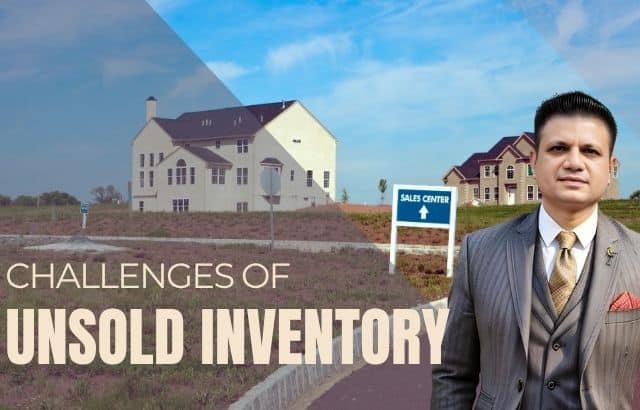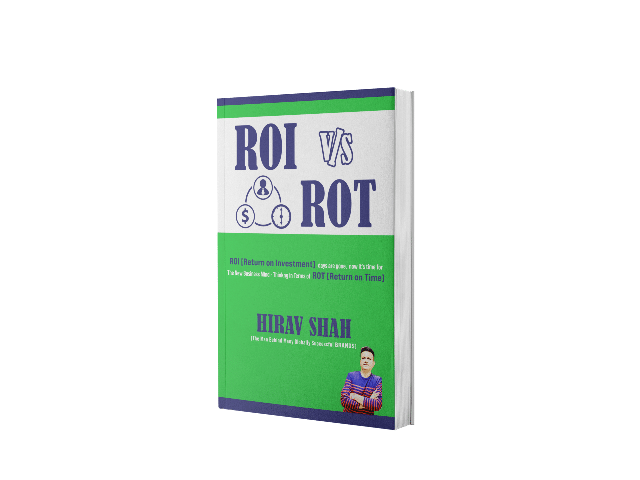Real estate is one of the largest industries in the world, with residential properties often carrying strong emotional and financial significance. A home isn’t just a structure; it represents stability, security, and dreams for many. Whether purchased for personal use or investment purposes, residential properties have a unique place in people’s lives.
However, as many property developers know, unsold inventory can create serious challenges. Various social, economic, and even political factors can contribute to unsold units, impacting developers’ revenue and causing financial strain. While traditional real estate strategies focus on marketing, pricing, and location, there are also less conventional approaches to helping developers clear their unsold inventory faster. Business strategists are increasingly turning to strategic planning and data-driven insights, including astrological insights, to better time launches and pricing, minimizing unsold inventory and maximizing profitability.
The Emotional and Financial Value of Residential Properties
A house is more than a piece of property; it’s a home. It’s where people spend the majority of their time, create memories, and find a sense of belonging. The residential real estate market thrives not only because people see it as an investment but because of the emotional connection individuals have with their homes. These factors contribute to the demand for different types of residential properties, whether they’re single-family homes, apartments, or even converted-use buildings.
Table of Contents
Types of Residential Properties
Residential properties vary in type and target audience. Here are the primary categories:
- Single Family Homes
Single-family homes can range from large bungalows to modest one-story houses. These homes, which may be detached or attached (like row houses), are popular because they offer privacy and ample space. These properties are often considered the ideal investment for families and long-term stability. - Apartment Blocks
Apartment blocks are common in urban and suburban areas. They typically offer a variety of amenities such as gyms, swimming pools, and security systems. Apartments with higher-end amenities tend to be more expensive, but budget-friendly options still exist for those looking for affordable housing. - Condominiums
A condominium (or condo) is similar to an apartment in terms of shared amenities but differs in ownership. Condo owners individually own their unit but share common areas, such as hallways or parking lots. This ownership model appeals to those seeking the flexibility of homeownership without the responsibility for maintaining the entire building. - Cooperatives
In a cooperative (coop), residents don’t technically own their unit; instead, they own shares in a corporation that owns the property. This communal ownership structure lowers costs and can offer more affordable living options, though it comes with its own set of rules and restrictions. - Manufactured Housing
In the United States, manufactured homes are built off-site and then delivered and installed on a permanent foundation. These homes are typically more affordable due to factory-based construction, but they can still offer modern designs and amenities. - Planned Unit Development (PUD)
A PUD is a mixed-use development designed to integrate housing with other amenities such as commercial spaces, parks, and recreational areas. Developers maintain common spaces, and homeowners typically manage their own homes. - Converted-Use Properties
Many properties once used for industrial or commercial purposes, like warehouses, schools, and churches, have been repurposed into residential spaces. These conversions can be a cost-effective alternative to new construction and often offer unique architectural appeal.
Challenges Leading to Unsold Inventory
Despite the emotional and financial significance of homeownership, many properties remain unsold for a variety of reasons. Some common reasons for unsold inventory include:
- Lack of Liquid Money
Homebuyers, especially the middle class, may hesitate to purchase homes during economic uncertainty or when they don’t have sufficient funds. Despite attractive property deals, many potential buyers simply can’t afford the upfront costs. - Loan Hassles
In times of economic instability, many people are wary of taking out loans due to fluctuating interest rates. Even if loan rates are low, fear of financial instability can prevent buyers from committing. - Vaastu and Feng Shui Issues
According to Vaastu Shastra (an ancient Indian architectural science) and Feng Shui (Chinese geomancy), the design and orientation of a property are critical to ensuring positive energy. A property with “defects” in these areas might deter potential buyers, even if it otherwise meets their criteria. - Lack of Flexible Pricing
During recessions or downturns, buyers tend to be more price-conscious. Property developers who refuse to adjust their prices, even when demand is low, may see unsold inventory pile up. - Underdeveloped Surrounding Areas
Even if a property itself is desirable, its surrounding infrastructure can play a significant role in the buyer’s decision-making. If an area is underdeveloped, such as lacking schools, hospitals, or retail spaces, potential buyers may think twice before making a purchase. - Poor Construction Quality
If a developer has cut corners on construction or used subpar materials, it could lead to negative word-of-mouth, which will hinder future sales. Quality assurance is a key component in driving demand. - Litigations
Legal disputes over the land or property can scare off potential buyers. If a property has pending lawsuits or unclear ownership status, it will likely remain unsold. - Excess Inventory
Sometimes, oversupply in a specific location can flood the market, leading buyers to wait until they find a better deal. Developers may have to adjust pricing or wait for the market to stabilize before inventory sells.
How Business Strategists Can Help Developers Clear Unsold Inventory
There are various strategies property developers can use to resolve issues related to unsold inventory. These include:
- Strategic Pricing Adjustments
Adjusting pricing based on market demand and economic conditions can make a big difference. Developers need to assess current market conditions and set flexible pricing strategies, even offering discounts or incentives to attract buyers. - Focus on Targeted Marketing
Marketing is a powerful tool. Developers can use detailed data analysis to better understand their target audience and customize marketing campaigns that specifically appeal to these buyers. This can include digital marketing, social media, and influencer collaborations to boost the property’s visibility. - Strategic Timing
Timing plays a huge role in the success of real estate ventures. Developers can consult with business strategists to determine the best time to launch projects or push sales, based on market conditions, seasonal trends, and consumer behavior patterns. - Investing in Amenities
Properties that offer appealing amenities tend to sell faster. Developers can enhance the desirability of unsold units by adding value-added services such as gyms, co-working spaces, or high-end landscaping. - Utilizing Legal and Financial Advice
Ensuring that all legal issues are resolved and financing options are clear can significantly reduce delays in sales. Having a professional legal and financial team can help smoothen the buying process for potential clients.
FAQs About Unsold Residential Inventory
Q: How can I avoid having unsold inventory?
A: The key is to have a well-planned strategy that includes flexible pricing, timely market analysis, and strong marketing efforts. Listening to market signals and adjusting as necessary is crucial.
Q: What role do economic conditions play in unsold inventory?
A: Economic factors such as interest rates, inflation, and unemployment can greatly impact people’s ability to purchase homes. Developers must stay informed about these trends and adjust their strategies accordingly.
Q: How long does it typically take to sell unsold inventory?
A: The time it takes to clear unsold inventory depends on the market, property location, and type of real estate. In some areas, it might take several months, while in others it could take longer, especially in a down market.
Q: What are the best ways to market unsold inventory?
A: Digital marketing, including social media campaigns, virtual tours, influencer partnerships, and real estate platforms, can be extremely effective. Personalized outreach to potential buyers can also help.
Conclusion
Real estate development is a rewarding yet challenging industry. Unsold inventory can be a significant issue for property developers, but it’s one that can be addressed with the right strategies. Whether it’s through pricing flexibility, targeting the right audience, or leveraging data and timing, developers can clear their unsold properties efficiently. Business strategists play an important role in guiding developers through these challenges, offering customized solutions to help them succeed in a competitive and dynamic market.
By using a combination of traditional real estate strategies and data-driven insights, developers can increase the chances of selling their inventory and turning those unsold properties into profitable investments.















